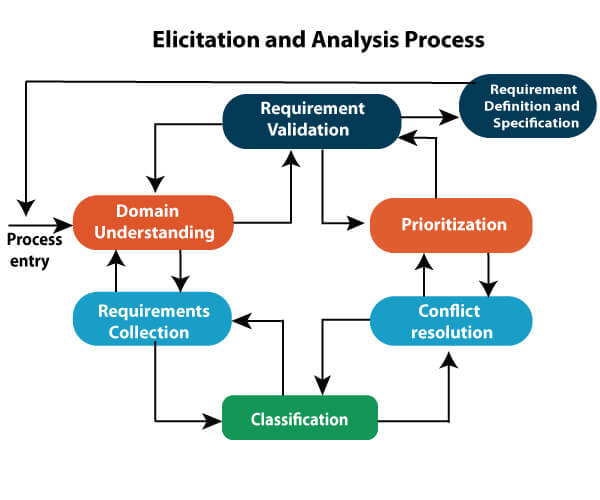In the dynamic domain of Human Resources (HR), the efficiency and effectiveness of processes often hinge on the clarity and precision of requirements. Requirement elicitation and analysis play a pivotal role in this context, serving as the bedrock upon which HR strategies and initiatives are formulated and executed. This article explores the intricacies of requirement elicitation and analysis within the HR domain, highlighting their significance, methodologies, and best practices.
Understanding Requirement Elicitation:
Requirement elicitation in HR management entails the systematic gathering, documentation, and analysis of organizational needs, expectations, and constraints. It involves engaging with stakeholders across various levels of the organization to identify HR challenges, define objectives, and articulate desired outcomes. Effective requirement elicitation lays the groundwork for designing HR solutions that align with organizational goals and address workforce-related issues.
Methods of Requirement Elicitation:
Interviews: Conducting structured interviews with HR stakeholders, including senior management, department heads, and frontline employees, allows for insightful discussions to uncover HR pain points, talent requirements, and organizational objectives.
Workshops: Facilitating interactive workshops involving cross-functional teams enables collaborative brainstorming and consensus-building around HR strategies, policies, and initiatives.
Surveys: Administering surveys to employees and managers provides quantitative data on HR preferences, satisfaction levels, and areas for improvement, complementing qualitative insights gathered through interviews and workshops.
Prototyping: Developing prototypes or mockups of HR processes, such as performance appraisal systems or onboarding procedures, allows stakeholders to visualize proposed solutions and provide feedback for refinement.
Observation: Observing HR practices and interactions within the organization allows for firsthand insights into workflow inefficiencies, communication gaps, and other areas requiring attention.
Requirement Analysis:
Once HR requirements have been elicited, they undergo thorough analysis to ensure clarity, feasibility, and alignment with organizational objectives. Requirement analysis in HR management involves scrutinizing requirements to identify conflicts, redundancies, and gaps, and refining them into actionable HR strategies and policies.
Key aspects of requirement analysis include:
Prioritization: Prioritizing HR requirements based on their impact on organizational performance, employee engagement, and compliance ensures that resources are allocated effectively to address critical needs first.
Validation: Validating HR requirements involves verifying their relevance, feasibility, and alignment with organizational values and culture. Techniques such as stakeholder validation meetings and requirement walkthroughs help validate HR requirements and ensure stakeholder buy-in.
Traceability: Establishing traceability links between HR requirements and related HR policies, procedures, and initiatives facilitates impact analysis and change management throughout the HR lifecycle.
Negotiation: Negotiating HR requirements involves reconciling conflicting stakeholder interests, balancing organizational objectives with employee needs, and reaching consensus on viable HR solutions.
Best Practices for Requirement Elicitation and Analysis in HR:
Engage Stakeholders: Involving HR stakeholders from diverse departments and levels of the organization fosters collaboration, builds consensus, and ensures that HR initiatives are aligned with organizational goals.
Use Multiple Techniques: Employing a combination of elicitation techniques, including interviews, workshops, surveys, prototyping, and observation, helps capture a comprehensive set of HR requirements and perspectives.
Document Thoroughly: Documenting HR requirements in a clear, structured format facilitates communication, ensures alignment, and serves as a reference for HR practitioners and decision-makers.
Embrace Iteration: Recognize that HR requirements are subject to change and refinement in response to evolving organizational needs, market dynamics, and regulatory requirements. Embrace an iterative approach to requirement elicitation and analysis to adapt HR strategies and initiatives accordingly.
Conclusion:
Requirement elicitation and analysis are essential processes in HR management, underpinning the design and implementation of effective HR strategies and initiatives. By employing robust elicitation techniques, conducting thorough requirement analysis, and adhering to best practices, HR practitioners can ensure that their initiatives are aligned with organizational goals, enhance employee engagement, and drive business success in a competitive global marketplace.











